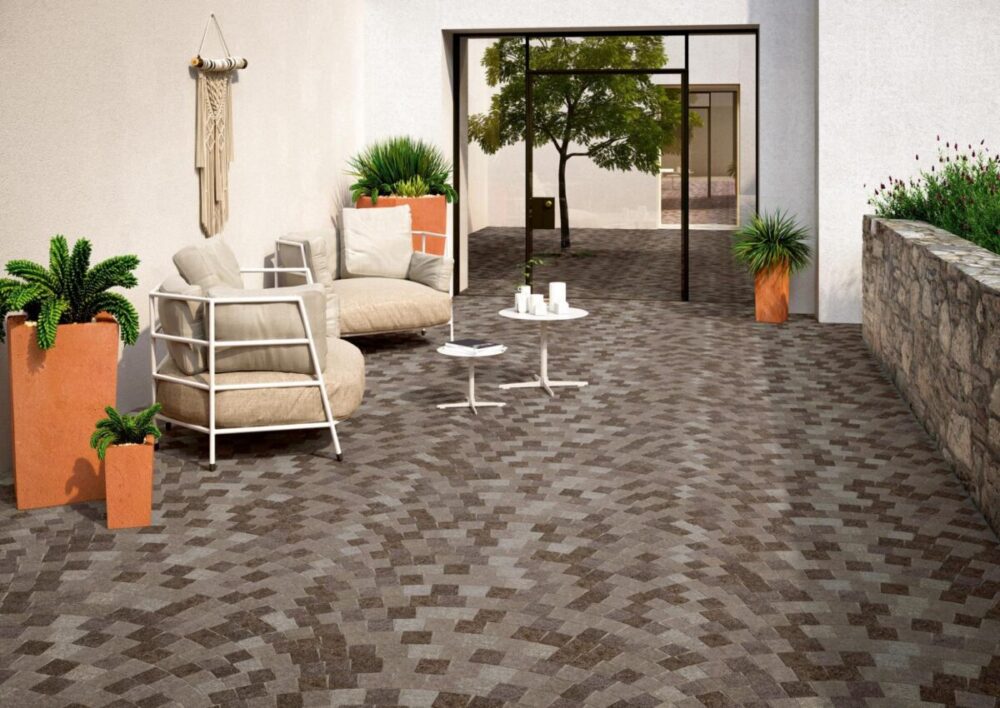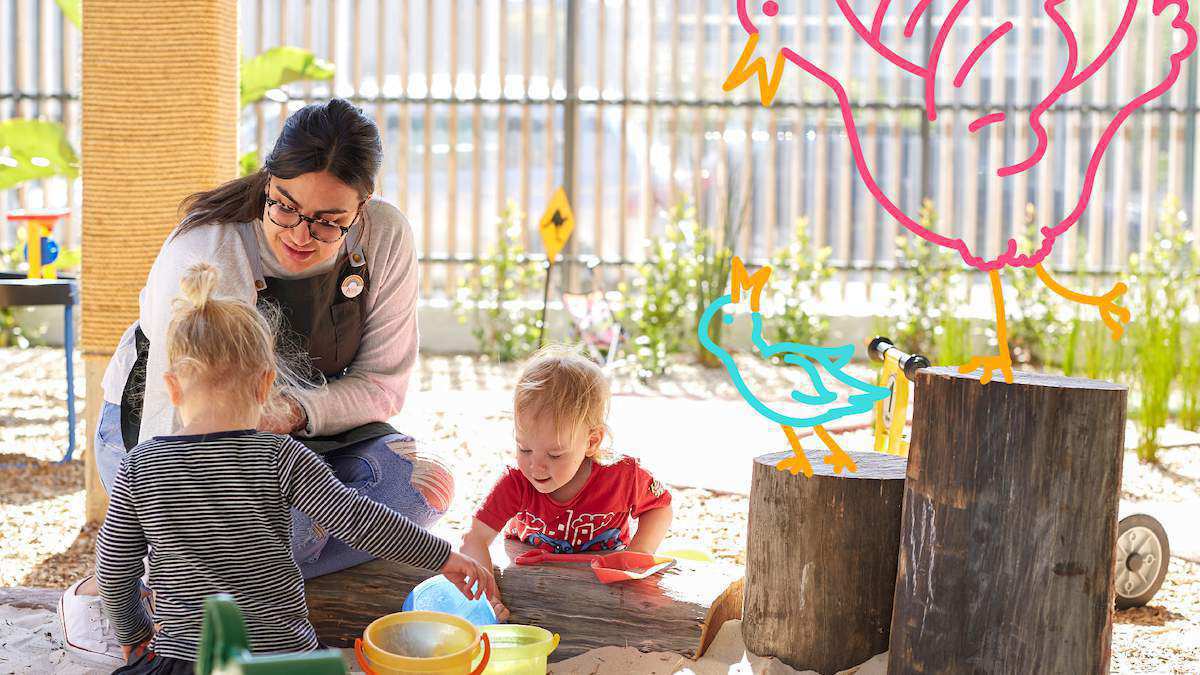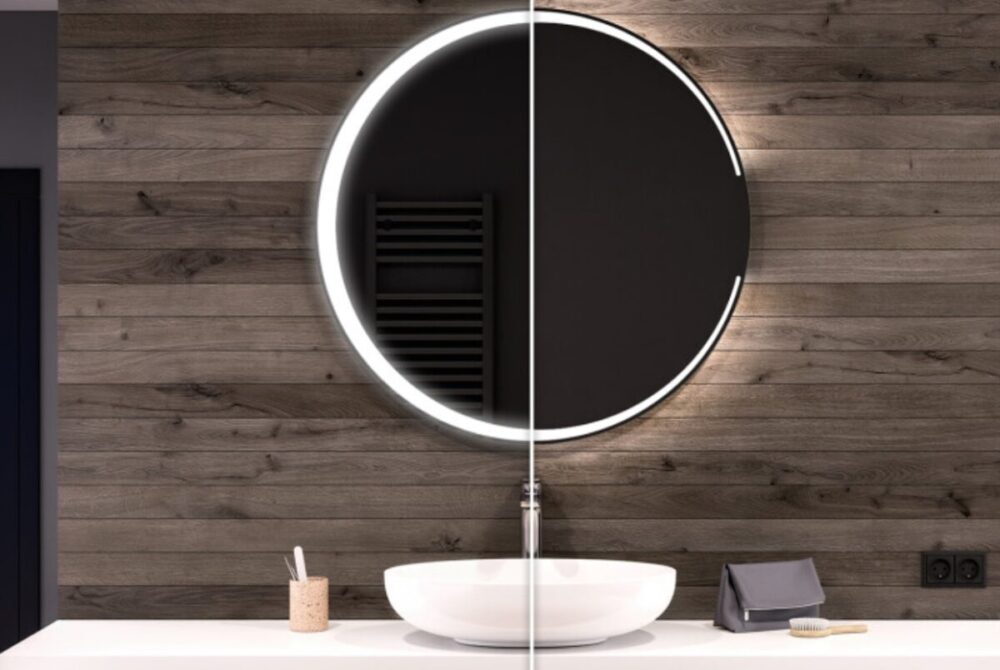Combining an array of technological performance with sensually pleasing aesthetics, porcelain tiles are quickly becoming the material of choice among homeowners and designers alike.
When it comes to a building structure, the choice of finishing materials for the floors and walls asks for a lot of careful consideration. The same thing applies for any hard surfaces – whether it’s the pavements, patios, gardens, and such. After all, it is the surface and the walls that remain exposed to the environment and the residents; the calling cards to any particular setting.
There are quite a few different materials that are frequently used by architects and homeowners to give the finishing touch to an interior and exterior project. It includes many traditional materials like stones, bricks, clay, concrete, wood, etc. In contemporary architecture, however, the trend is to use a variety of porcelain tiles such as these at refin-ceramic-tiles.com; whether it’s a living room, bathroom, kitchen, garden, or balcony.
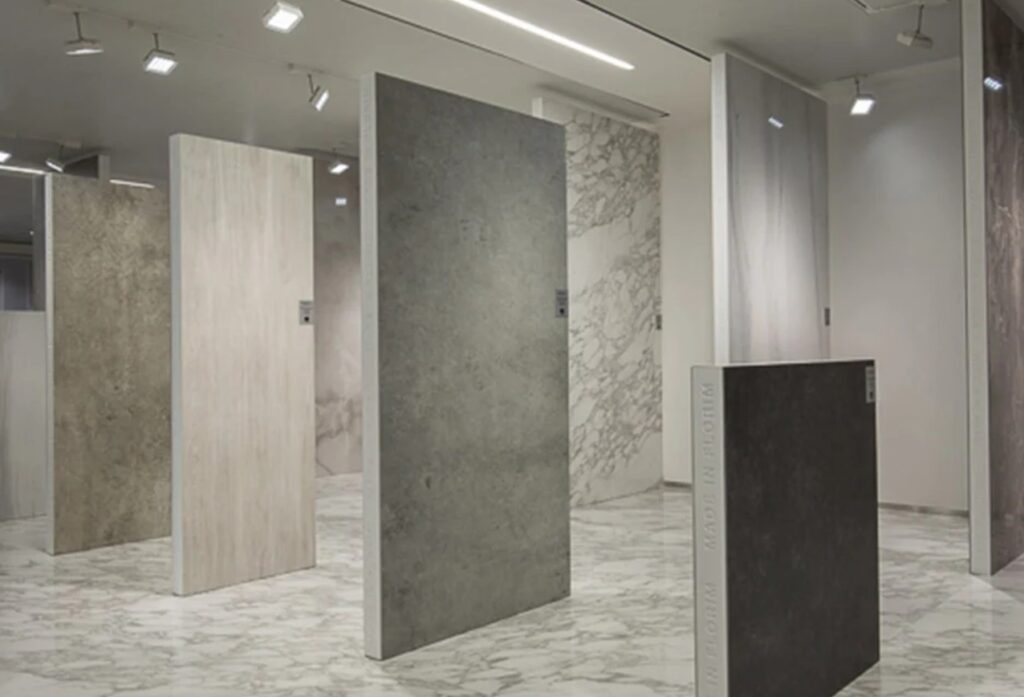
Porcelain Stoneware Material
Porcelain stoneware is a hard, compact, and resistant ceramic material with little to no porosity; meaning it absorbs almost no water at all. Therefore, the tiles that are made using porcelain stoneware materials are known as porcelain stoneware tiles. They are also invariably referred to as ceramic tiles, floor tiles, stoneware tiles, etc.
What makes porcelain stoneware tiles so outstanding is its intricate composition. Only the purest materials sourced sustainably from nature are used, with the raw materials going through an innovative manufacturing process. With a combination of heat and coordinated pressing, the raw materials get transformed into even more compact blocks of tiles; before giving them some alluring aesthetic effects with the use of natural colours.
Main Types of Stoneware Tiles
Porcelain stoneware tiles can be categorized in many different ways. They are available in a great variety of styles, colours, patterns, and textures. In terms of use, however, they can be mainly categorized into two groups:
Stoneware Tiles for Interiors
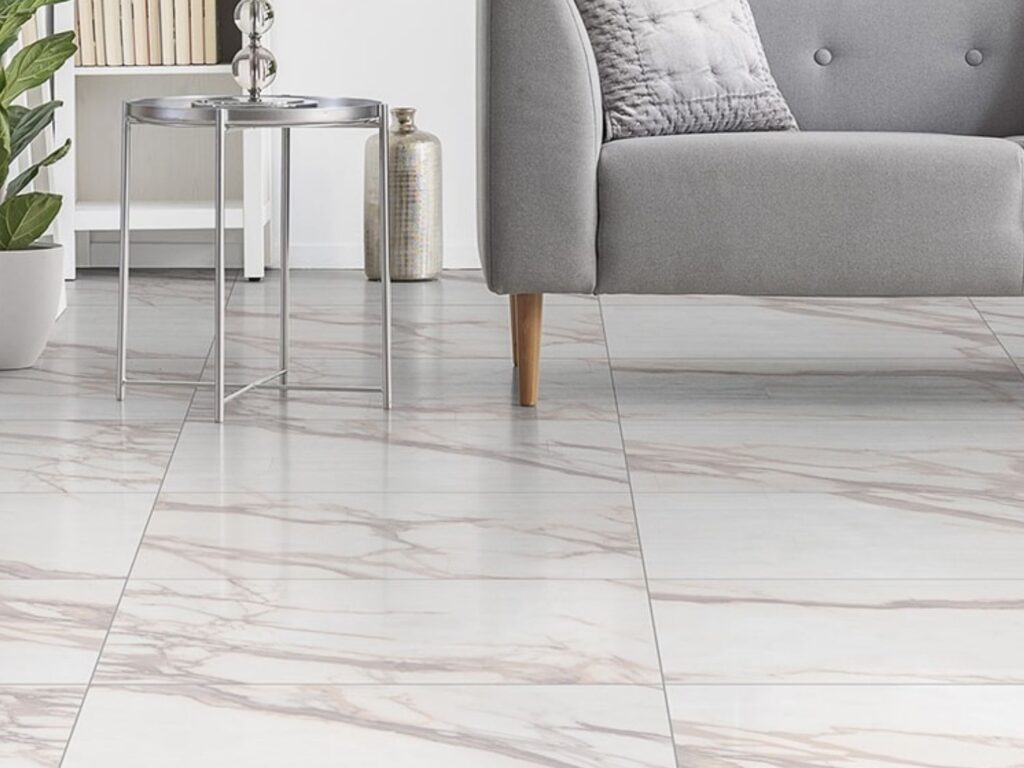
When it comes to high-quality ceramic tiles for the interior, there is no shortage of options to choose from. These tiles can be characterized according to their thickness, size, shape, and the level of resistance. They are also usually glazed or digitally printed; showcasing a plethora of solid colours or unique textures and patterns in a soft, matt, or glossy finish.
The best wall and floor tiles for the interior are the ones that are greatly versatile and last for a long time. They also need to offer resistance against wear, tears, scratches, and any accidental breakages. The finest quality bathroom and kitchen tiles, on the other hand, need to come with the added resistance against heat, backsplashes, humidity, grease, and so on. Slip-resistance is another property of indoor tiles that can be really beneficial, especially if you have children running around in the house.
Stoneware Tiles for Exteriors
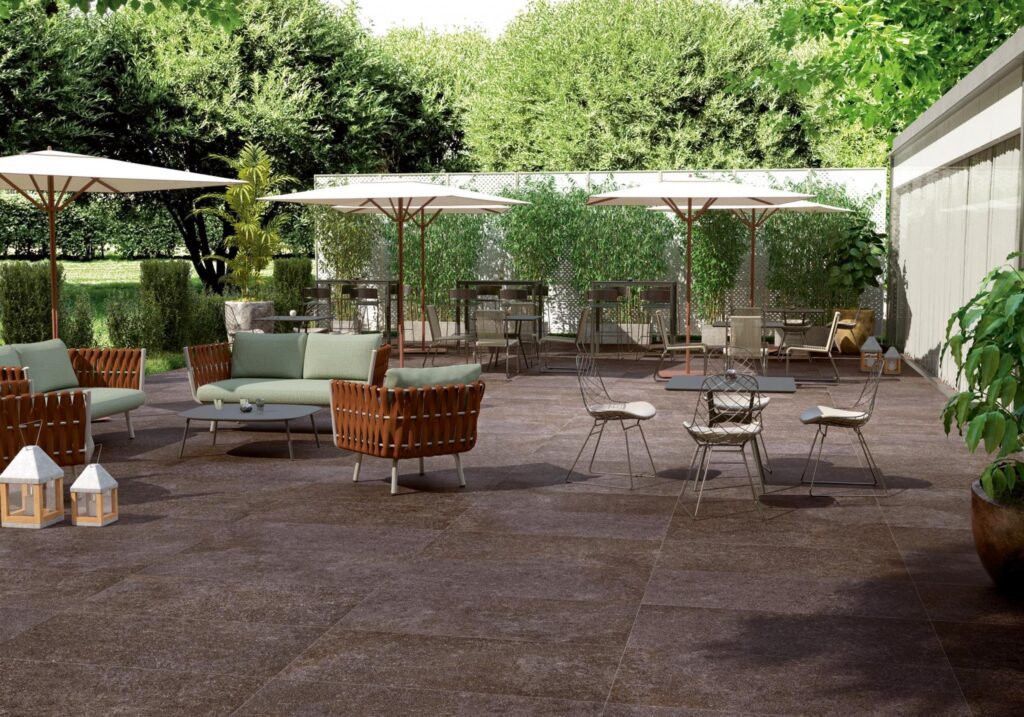
While all of the above-mentioned characteristics of interior floor tiles can also come really handy in the exterior, the outdoor porcelain tiles made specifically for the exterior tend to offer some additional properties to safeguard against environmental exposure. It includes enhanced resistance against a sudden change in temperatures, abrasions, and shouldn’t bend under the stresses of heavy loads. As outdoor tiles are expected to remain exposed to the sunshine, it also comes featuring some added protection against stains and discolouration.
Often used in porches, pavements, and swimming pools; the best outdoor tiles often tend to come unglazed with textured finishes, and thus, provides extra grip and traction. They can also be slightly thicker, double-loaded, and offered in relatively larger sizes.
Stylistic Varieties of Ceramic Tiles
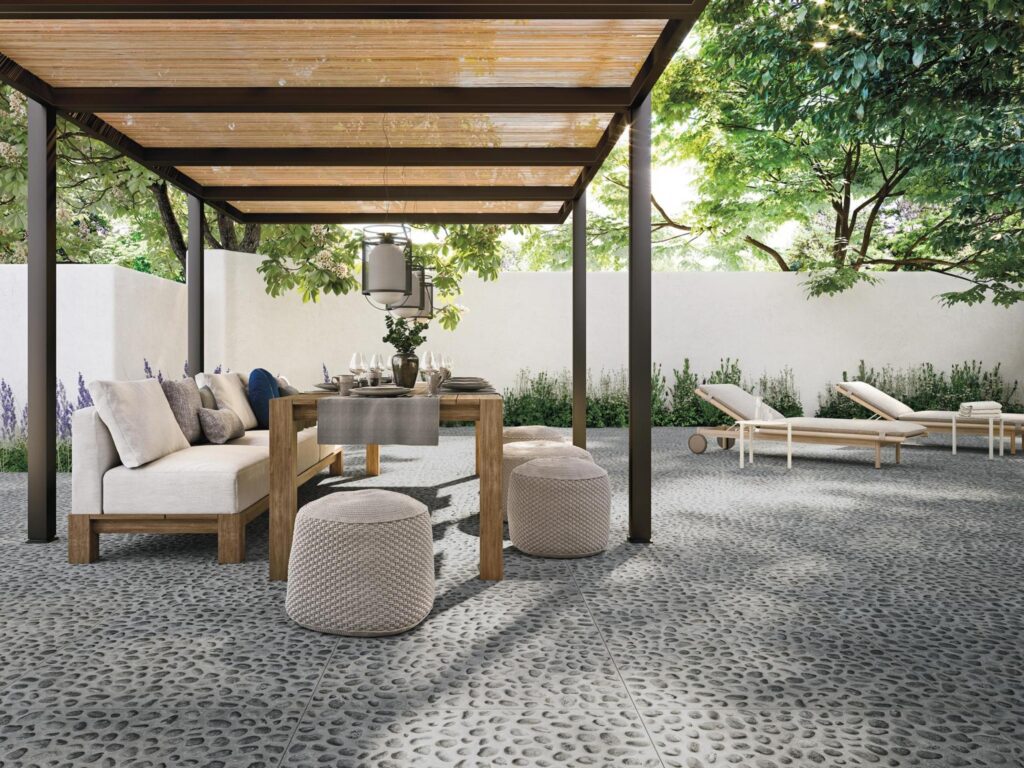
Porcelain stoneware tiles offer numerous composition and design choices, thanks to its availability in a great number of colours, textures, and patterns. The tradition dictates them to be a slab of solid colours differentiated through the use of different shades and hues. It includes the entire chromatic ranges of colours such as white, black, grey, ash, blue, green, etc. Some porcelain tiles are also full-bodied; which means that a single colour or pattern runs all the way through the tile – from the surface to the base of its slab. The classic styles also include tiles with different graphical patterns and designs printed on them.
Moreover, there are also some modern floor tiles with incredible glass and metallic effects. Thanks to the advancement of manufacturing techniques, some manufacturers also offer stoneware tiles that can authentically recreate the look and feel of several other traditional materials. The collections comprising of such innovative aesthetics are always increasing and includes among others:
- Brick-look Porcelain Stoneware
- Wood-look Porcelain Stoneware
- Terracotta-look Porcelain Stoneware
- Travertine-look Porcelain Stoneware
- Concrete-look Porcelain Stoneware
- Slate-look Porcelain Stoneware
Understandably, the composition of the setting depends largely on the taste, requirements and personality of each project; ranging from understated minimalism to attractive opulence. Whereas, the latest trend dictates it to be harmonious with accentuated colours and patterns here and there. You can also give a setting a unique dimension by choosing different styles and combine them together.
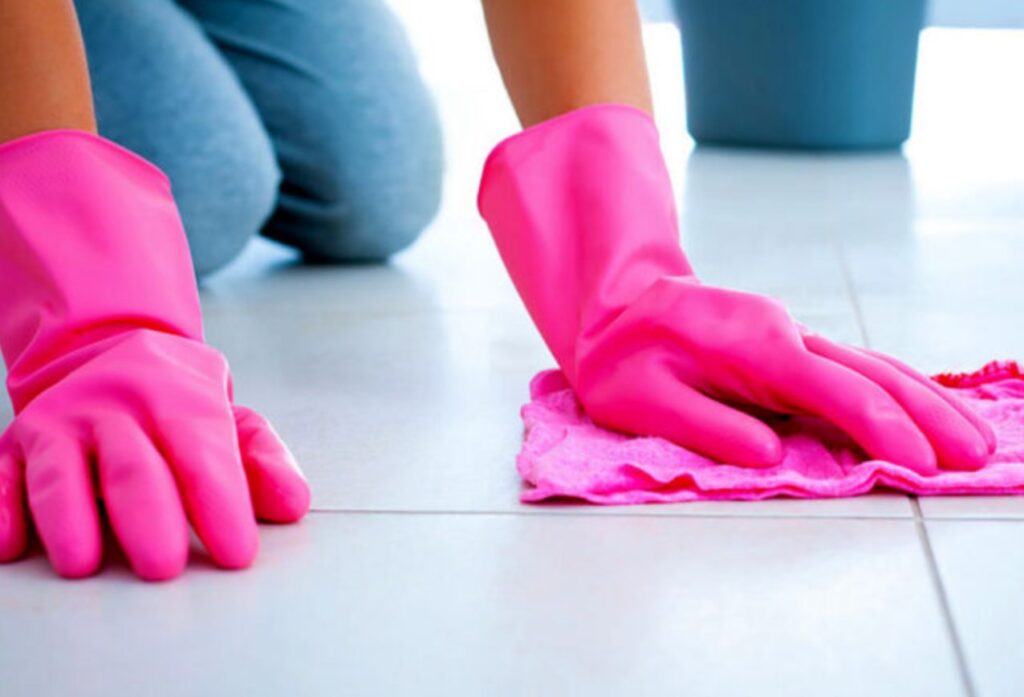
Maintenance and Cleaning of Stoneware Tiles
As porcelain tiles are naturally hard-wearing and hard-bending, they are a delight to install and maintain. They can be installed in several ways too, while the sealing remains intact even after years of heavy usage. Resistant to stains and grouts, these floor tiles also don’t require as much cleaning.
When you do need to clean them though, you can just use any traditional cleaning tools and liquids. However, as some bleaches, acids, and wire brushes are prone to be abrasive; you should avoid using them on the tile surfaces.
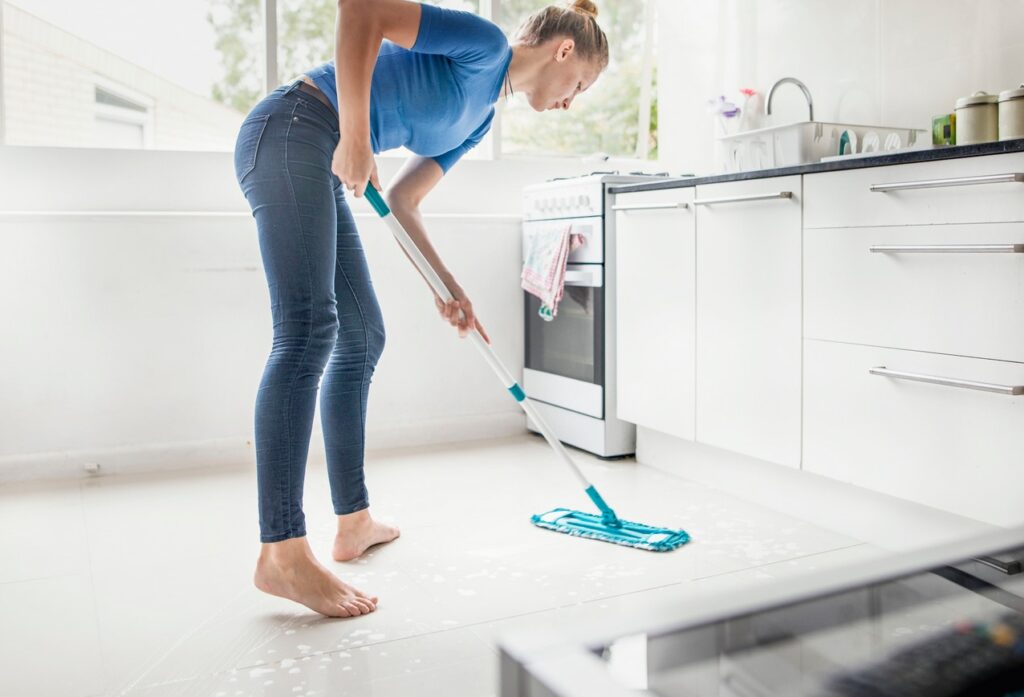
Final Words
Porcelain tiles are one of the most luxurious materials when it comes to home décor and cosy outdoor settings. They are a long-lasting, affordable material; offering incredible sophistication and aesthetic appeals. More and more innovative techniques are being utilized, enhancing the variety and flexibility of space compositions with tiles. They are friendly to the environment too.
So, which of your projects are most suitable for the use of porcelain stoneware tiles?

